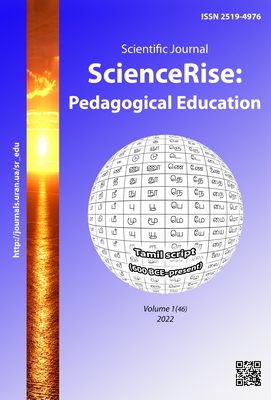Contextual teaching material development model
DOI:
https://doi.org/10.15587/2519-4984.2022.250891Keywords:
Real Document Transaction, worksheet, cooperative learning, accounting, teaching materials, contextualAbstract
Learning accounting so far only uses student activity sheets or books or handouts. This obviously can cause students to be vulnerable to disinterest, difficulty in learning accounting, less motivated and abstract lessons. This study aims to determine the extent, to which the process of making printed teaching materials model products is in the form of real document transactions that contextually integrate student worksheets in accounting. By designing learning experiences that are close to real-world conditions, so that they can grow knowledge and skills in the field of accounting, through innovation in creating product models of printed teaching materials that are contextually integrated with working papers in the accounting field. The method, designed in this research, is the Thiagarajan (4D) development model, which consists of the Define stage, Design stage, Develop stage, and Dissemination stage. The results showed that the product in this development research was in the form of appropriate teaching materials to support the application of the scientific approach in implementing the curriculum. Overall, the teaching materials made are real and contextual, students are motivated to learn well by using Real document transaction products because learning is like using transaction proof documents in the real industrial world
References
- Abraham, A. (2006). Perceptions of the Linkages between teaching Contexts, Approaches to Learning and Outcomes. Research Online institutional repository for the University of Wollongong.
- Hariom, A. (2014). Impact of Globalization on Education: A Study with Reference to Slum Dwellers in Agra, India. Journal of Education & Social Policy, 1 (2), 66–73.
- Kahu, E., Nelson, K., Picton, C. (2017). Student interest as a key driver of engagement for first year students. Student Success, 8 (2), 55–66. doi: http://doi.org/10.5204/ssj.v8i2.379
- Morable, L. (2000). Using Active Learning Techniques. Exclusive opyright is retained by the U.S. Department of Education, the Texas Higher education Coordinating Board, and Richland College.
- Horton, W. S., Gerrig, R. J. (2002). Speakers’ experiences and audience design: knowing when and knowing how to adjust utterances to addressees. Journal of Memory and Language, 47 (4), 589–606. doi: http://doi.org/10.1016/s0749-596x(02)00019-0
- Bulent, T. (2012). Prospective Teachers’ Beliefs and Perceptions about Teaching as a Profession. Educational Sciences: Theory and Practice, 12 (3), 1–24.
- Dale, E. (1969). Audiovisiual methods inteaching. NewYork: Holt, 108.
- Hisyham, Z. (2007). Strategi Pembelajaran Aktif. Yogyakarta: CTSD.
- Karrie, J. (2008). Making Cooperative Learning Work in the College Classroom: An Application of the ‘Five Pillars’ of Cooperative Learning to Post-Secondary Instruction. The Journal of Effective Teaching, 8 (2), 61–76.
- Scott-Webber, L., Konyndyk, R., Denison, M. (2019). POE: Understanding Innovative Learning Places and Their Impact on Student Academic Engagement – Index 6–8 “Alpha” Survey Developments. Journal of Education and Learning, 8 (5), 31. doi: http://doi.org/10.5539/jel.v8n5p31
- Kelly, C. M. (2011). Fun and Games in Higher Education. Eastern Education Journal, 40 (1), 23–32.
- Kurniawati, E. (2009). Komparasi Strategi Pembelajaran. Available at: https://www.scribd.com/document/317267473/Komparasi-Strategi-Pembelajaran
- Schinske, J. N. (2011). Taming the Testing/Grading Cycle in Lecture Classes Centered Around Open-Ended Assessment. Journal of College Science Teaching, 40 (4).
- Teori Akuntansi: Perekayasaan Pelaporan Keuangan (2005). Suwardjono. Yogyakarta: BPFE, 776.
- Belkaoui, A. R. (1992). Accounting theory. New York, Boston, 359.
- Handayani (2009). Stategi Belajar Aktif dengan ICM.
Downloads
Published
How to Cite
Issue
Section
License
Copyright (c) 2022 Agung Listiadi

This work is licensed under a Creative Commons Attribution 4.0 International License.
Our journal abides by the Creative Commons CC BY copyright rights and permissions for open access journals.
Authors, who are published in this journal, agree to the following conditions:
1. The authors reserve the right to authorship of the work and pass the first publication right of this work to the journal under the terms of a Creative Commons CC BY, which allows others to freely distribute the published research with the obligatory reference to the authors of the original work and the first publication of the work in this journal.
2. The authors have the right to conclude separate supplement agreements that relate to non-exclusive work distribution in the form in which it has been published by the journal (for example, to upload the work to the online storage of the journal or publish it as part of a monograph), provided that the reference to the first publication of the work in this journal is included.








